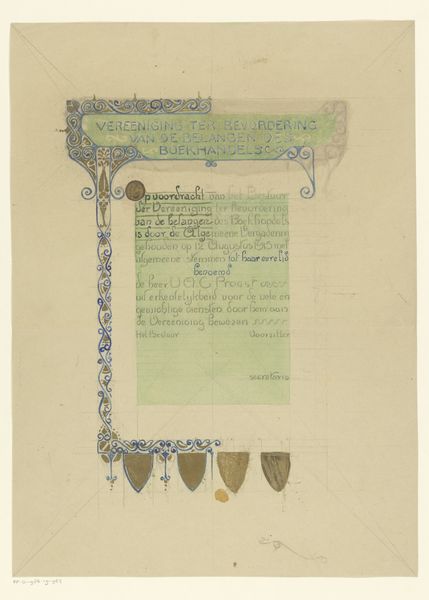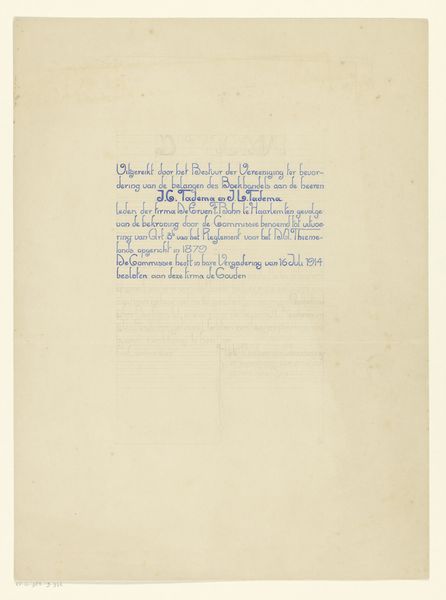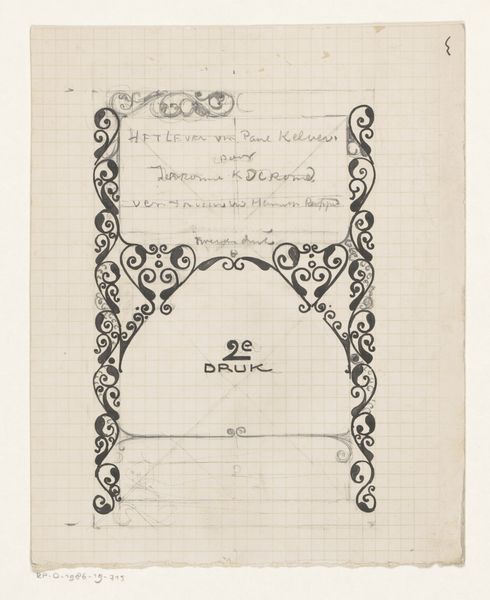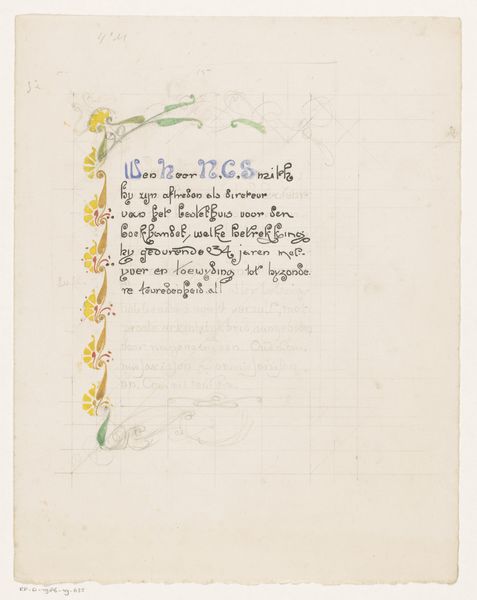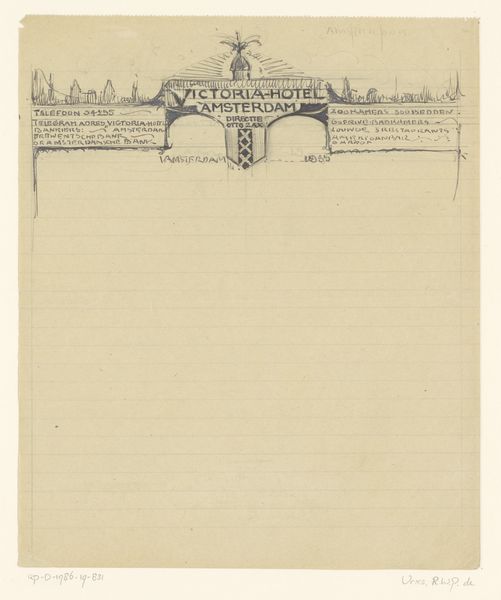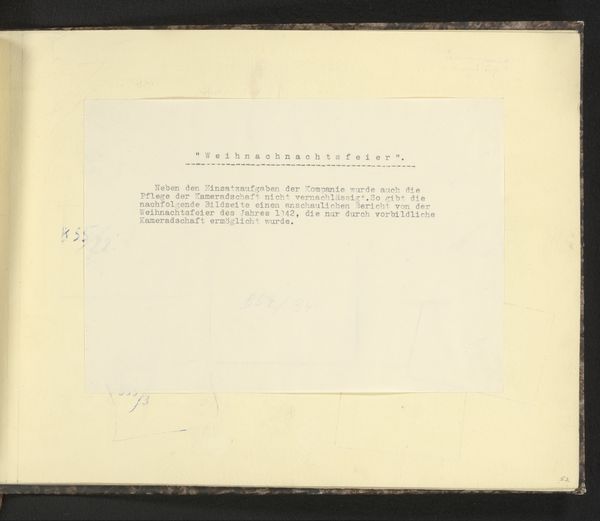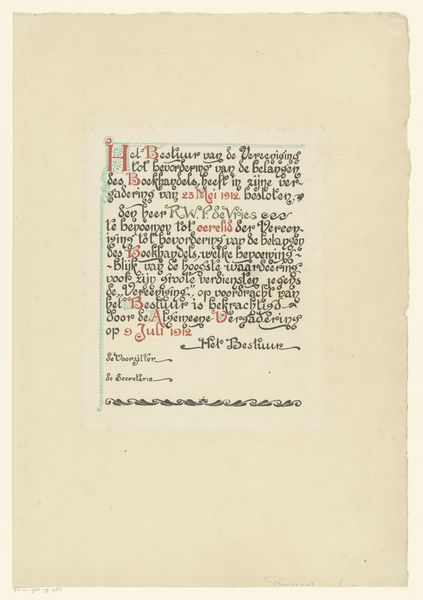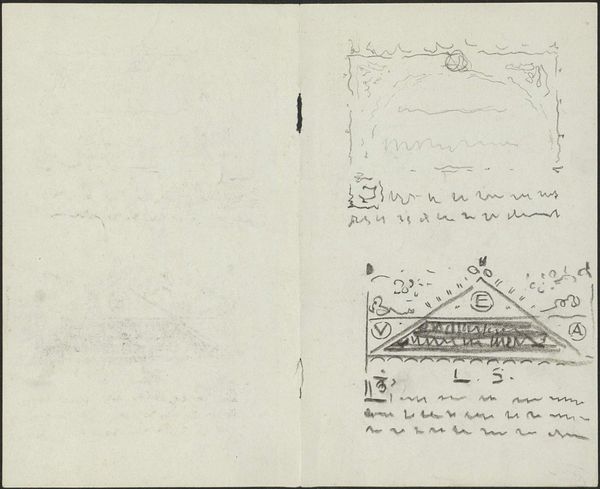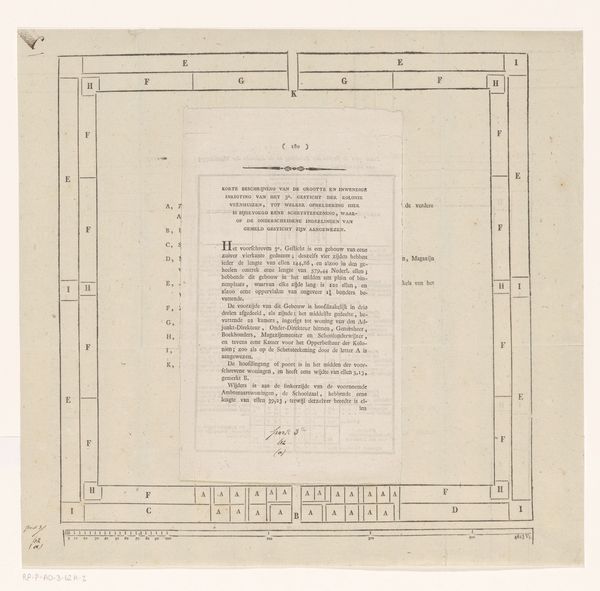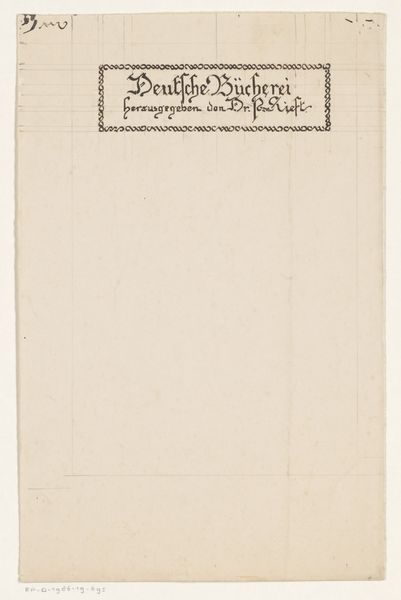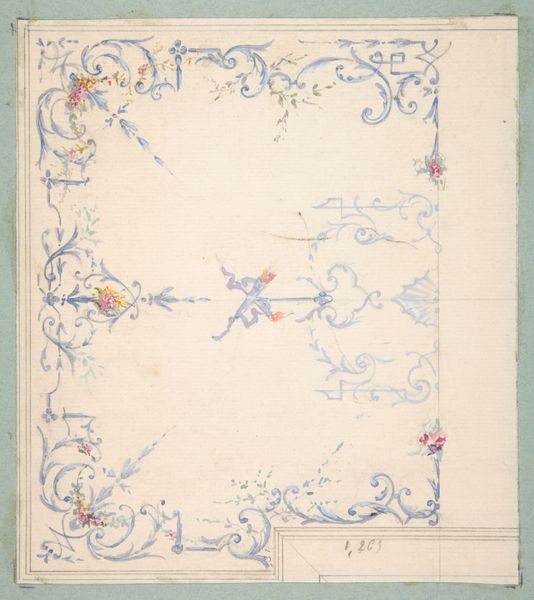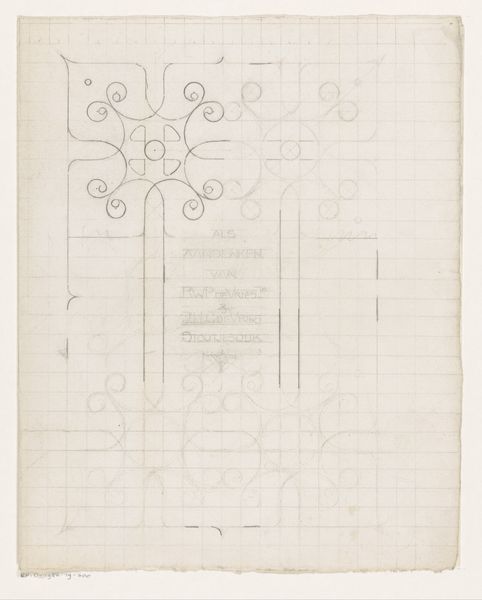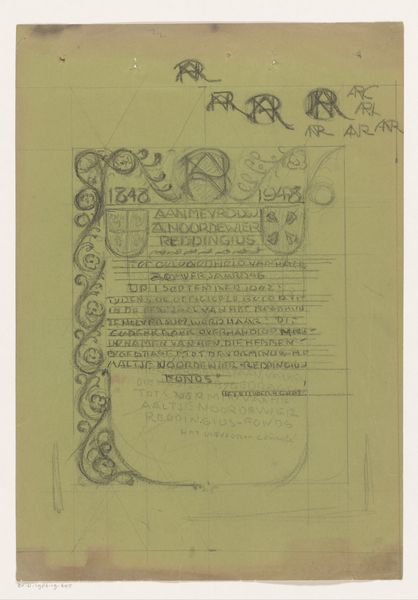
Ontwerp voor een oorkonde van de Vereniging ter Bevordering van de Belangen des Boekhandels c. 1900 - 1915
0:00
0:00
drawing, paper, ink
#
drawing
#
aged paper
#
art-nouveau
#
blue ink drawing
#
old engraving style
#
paper
#
personal sketchbook
#
ink
#
idea generation sketch
#
ink colored
#
sketchbook drawing
#
watercolour illustration
#
storyboard and sketchbook work
#
decorative-art
#
sketchbook art
#
calligraphy
Dimensions: height 360 mm, width 362 mm
Copyright: Rijks Museum: Open Domain
Editor: This is “Ontwerp voor een oorkonde van de Vereniging ter Bevordering van de Belangen des Boekhandels” a design for a certificate by Reinier Willem Petrus de Vries, created sometime between 1900 and 1915. It's an ink drawing on paper, and what strikes me is how unfinished it feels. It gives us a peek into the design process. What story do you think it tells? Curator: It tells a story of institutional self-promotion. We see here a self-conscious effort to imbue the book trade association with an air of importance. The Art Nouveau flourishes are no accident, right? They speak to a desire to align this association with broader currents of cultural sophistication. How does this image participate in defining this profession’s importance? Editor: I see what you mean! So, the design isn't just decoration; it's making a statement about the value and prestige of bookselling in society. Is this visual style usually linked to certain social classes at that time? Curator: Absolutely! Art Nouveau was often associated with the rising bourgeoisie and their aspirations to cultivate 'good taste'. So the association is saying, "We’re not just shopkeepers; we're cultured participants in the world of ideas.” Where do you think such self-fashioning efforts succeed or fall short? Editor: That makes me consider who the certificate is for, what status it confers on its receiver. It feels performative, and potentially exclusive. So it might be both aspirational and perhaps alienating for some members. I never would have considered these elements! Thanks for showing how social history shapes something seemingly simple, like a design. Curator: Exactly. Looking at this beyond face value makes us think about the role of institutions in constructing and reinforcing cultural value. Hopefully you'll consider these sorts of dynamics when you look at artworks going forward.
Comments
No comments
Be the first to comment and join the conversation on the ultimate creative platform.
